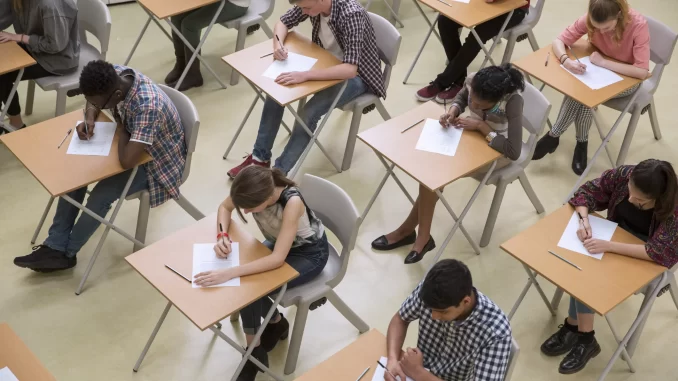
By Thomas Montana
New York is seen as having one of the best school systems in the U.S., according to a recent report from WalletHub.
New York ranks 10th overall when including factors such as levels of recognition compared to other schools across the country, graduation rates, test results, dropout rate, pupil-teacher ratio and number of licensed teachers. Additionally, New York had the fifth-lowest student-to-teacher ratio.
However, the state fell to 20th when it came to safety. The criteria for this score includes certain learning aspects such as the existence of a digital learning plan, out of school access and accessible technologies as well as health issues such as the share of threatened or injured students, parents who agree if their child attends a safe school, access to substances, shootings and bullying.
Gary Anderson, Professor Emeritus, Dept. of Administration, Leadership, and Technology, Steinhardt School of Culture, Education, and Human Development at New York University, said test scores alone shouldn’t define student performance. “We’ve seen that too much emphasis on high-stakes testing can skew the curriculum in ways that can overemphasize only those subjects that are tested,” he said. “Also teaching to the test can discourage forms of teacher creativity that motivate students to learn and keep teachers from burning out.”
WalletHub also ranked New York first in total expenditures in per-pupil spending. The total number of per-pupil spending for New York is just over $35,000 per student according to Empire Center. Of the $254 billion in Hochul’s 2025 Executive Budget, $35.3 billion will be given to total school aid.
But, as proof that more money doesn’t necessarily mean better performance, New York was 45th in graduation rates, despite an 87% graduation rate, according to World Population Review. In addition, according to US News, New York finished 27th in National Assessment of Educational Progress (NAEP) Math and Reading Test scores.
“Getting enough funding is essential for a productive school system, but simply having more money doesn’t guarantee success,” said WalletHub analyst Chip Lupo. “How funds are applied also plays a big role in how good a school system is, as does the quality of educators, other professionals and the curriculum. In addition, schools need to focus not just on test scores but also on making sure that students feel safe, comfortable and cared for.”

